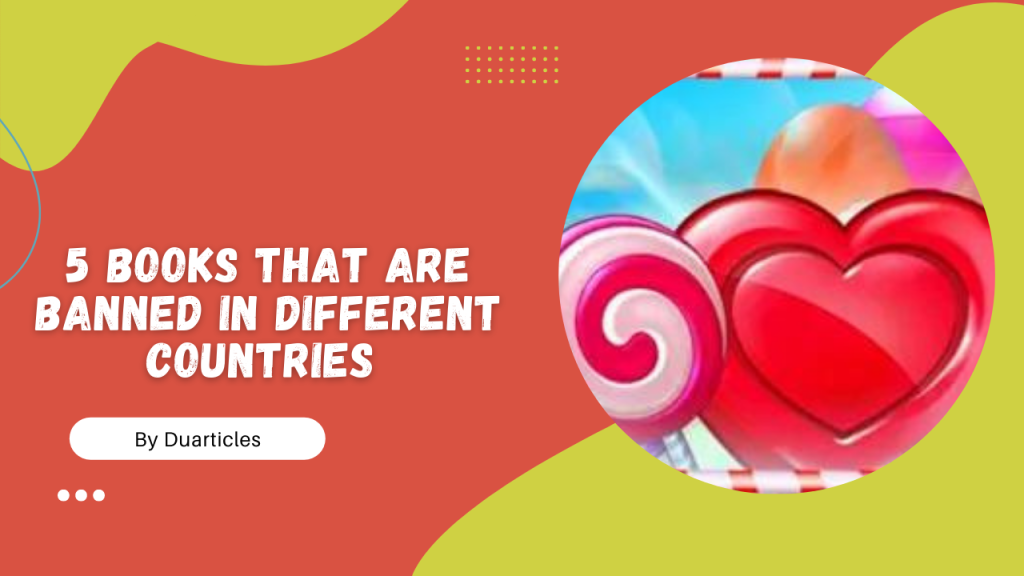5 Books That Are Banned in Different Countries of the World

Books are powerful weapons that can change our view of the world and our lives. But not all
books can be approved and allowed to be read in different countries of the world. Governments, churches, and schools have banned some books because of their controversial content. But if you want to relax and have fun at home, remember that the sweet bonanza slot is available worldwide!
In this article, we will look at 10 books banned in different countries of the world, and find out
why do they cause so much controversy and controversy?
1. The Twilight trilogy by Stephanie Meyer
In 2009, the management of the Australian primary school Santa Sabina banished this
vampire novel from the shelves of the school library. In his opinion, the themes of the
supernatural that the books raised contradicted the Christian beliefs of the school’s students.
The school’s teachers even held a seminar for the students, where they discussed the
events described in the book. According to the teachers, in this way, they wanted to make
sure that students understand that everything written in these books is fiction and to make
sure that children do not have a distorted perception of reality.
2. “The Catcher in the Rye” by Jerome Salinger
This classic work, written by an American writer, tells about the life of a 16-year-old
teenager. In the period from 1961 to 1982, “The Catcher in the Rye” became the most
banned book in schools and libraries in the United States. It was believed that the book
encourages children to rebel, and drunkenness. In one library, the novel was banned
because it “contained a lot of obscene language, raised moral issues, and mentioned the
occult.” And in 1960, one teacher was fired only because during classes he told students
about this work. And although he was later reinstated, for a long time the book was thrown
out of the school curriculum. In 1981, “The Catcher in the Rye” was the book that was most
often censored and about which the most were taught at school
3. “Thumbelina” by Hans-Christian Andersen
Do you think there are such ridiculous prohibitions only in America? And here it is not. In
Russia, there is a law “On the protection of children from information that harms their health
and development.” Adults took it too literally and when they began to read from childhood all
the favorite and familiar fairy tales, the hair on their heads stood on end. Did you know that
the classic fairy tale “Thumbelina” contains information about forcible confinement and
forced marriage? Therefore, it should not be read to children under 12 years of age.
“Kolobok” is also not recommended for the fragile child’s psyche, because it contains scenes
of physical violence against the Kolobok. Well, it’s generally better not to show books about
Carlson before the age of 18 to anyone. And then suddenly children or teenagers will read
them and begin to play pranks, like this flying hero – to indulge in buns and eat jam jars?
4. “Captain Underpants” by Dev Pilka
In 2012, a series of children’s books about Captain Underpants became the most banned in
the United States, it even bypassed the infamous book “50 Shades of Grey”. The series tells
about the adventures of two children, big fans of practical jokes. According to the
supervisory authorities, this book teaches children to disobey adults and puts too much
emphasis on underwear. The work was also criticized for the fact that the main character of
the book walks half-naked. In 2006, three high school students came to the school
Halloween dressed as Captain Long Johns, as a result of which the director of this
educational institution forbade all students to wear costumes to this event.
Conclusion
Books have the power to challenge norms, provoke thought, and ignite controversy. Throughout history, numerous books have faced bans and censorship in different countries for their content. This article delved into five such books that have been banned in various parts of the world. From the supernatural themes of the Twilight trilogy to the rebellious nature of “The Catcher in the Rye,” these books have sparked debates and divided opinions. Whether it’s religious beliefs, moral concerns, or perceived harmful influence on children, the reasons behind these bans vary. However, the banning of books also raises questions about freedom of expression and the importance of diverse perspectives in literature. Despite the controversies, these books continue to captivate readers and remind us of the ongoing battle between artistic expression and societal restrictions.



